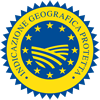Description
The Gentse Azalea PGI is an ornamental plant belonging to the Azalea indica or Rhododendron simsii variety. The plant can be put on the market during the phase in which colours appear, also called the "candle flame" phase.
Production Area
The production area of Gentse Azalea PGI covers the entire district of eastern Flanders.
Production Method
The plant is cropped by means of slipping or grafting method. The slips are covered with plastic sheets and brought to a temperature of propagation which spans from 23 to 25°C. The recurrent phase is topping, during which the branch top is eliminated so that the rest can propagate. This step is repeated for a number of times which changes depending on the final size to achieve. Until the second topping, the azalea's cropping operations are developed indoor, later they can be made both indoor and outdoor. Once achieved the diameter desired, the azalea starts to produce buds and, depending on the time of exposure to cold, it is classified as very precocious (starting from August 15th), precocious (starting from December 1st), medium (starting from January 15th) and tardy (starting from February 15th). The blossomy azaleas are obtained by forcing, which means by exposing the trees, when sufficiently mature, to a temperature of at least 20°C and then by watering them regularly and by exposing them frequently to artificial light. The final phase, after which the plant can be sold, is when the colour appears or the so-called "candle flame" phase has started.
Appearance and Flavour
Gentse Azalea PGI with a fresh and green look is available in a spherical shape in bush or on stalk, with high stalk, pyramidal, with braided trunks or multi-trunks and in different peculiar shapes in various colours such as white, salmon pink, deep crimson, rose, violet and lilac, with or without veins or trims.
History
The first historic evidence of azalea in Belgium goes back to 1774, when gardener Judocus Huytens imported it from Great Britain to the Ghent's surroundings. However the actual import of azalea started in 1808 thanks to British captain Welbanck. In the same year, the establishment of the agricultural and botanic Association of Ghent contributed to its success. Since February 6th, 1819, when Baron Du Bois de Vroeylande displayed it for the first time during an exhibition, the azalea had started to be increasingly more appreciated. Indeed, in 1893, the five-year international shows had started and today they are known as Gentse Floraliën, and Louis Van Houtte, after having developed azalea plants in new shapes and colours, published his first catalogue with 97 varieties of Azalea indica. Many documents confirm its fame, amongst which a completely dedicated magazine, called Iconographie des azalées de l'Inde of 1881. The Étude sur la culture et la végétation de l'Azalea Indica by Georges Truffaut dated 1893 is the Belgian postage stamp dedicated to the azalea that the Ghent city issued on occasion of the three-day Fair of azaleas in 1938. The attendance to the Floraliën of Ghent 2005 and Euroflora 2006 of Genoa is more recent, where it obtained lots of prizes and awards.
Gastronomy
Gentse Azalea PGI has to be put in a fresh and very luminous place, but paying attention to not expose it to direct sunlight. It is a blossoming ornamental plant which does not need any fertiliser, parasticide or treatment against diseases. However, in order that flowers have a long life, it needs a constantly wet ground but free from still water in the pot dish, as this could damage it. To keep it in a good condition for an entire week, it is sufficient to immerse its pot completely in a pail of water making it soak until the air bubbles will stop to surface and then to lift it and make it drain.
Marketing
The product is sold as Gentse Azalea PGI. It is sold with a label that displays the name of the product, the PGI logo and the PAK number of the azalea quality project, Project Azalea Kwaliteit.
Distinctive Features
Gentse Azalea PGI owes its development to the mild maritime climate, which is enough humid, and to the slightly sandy soil which is permeable to wet. Indeed, it is grown in a region which is ideal to sell it, also thanks to the high number of growers, schools and producers near the Ghent's area, which has achieved the reputation of the "Region of flowers".





